Using Bidirectional Long Short-Term Memory Method for the Height of F2 Peak Forecasting from Ionosonde Measurements in the Australian Region
Abstract
1. Introduction
2. Data Sources
2.1. Ionosonde Stations
2.2. Variables
3. Methodology
3.1. hmF2 Generation
3.2. Artificial Neural Network (ANN)
3.3. Recurrent Neural Network (RNN)
3.3.1. Long Short-Term Memory (LSTM) Method
3.3.2. Bidirectional LSTM (bi-LSTM) Method
4. Results
5. Summary and Conclusions
- The new bi-LSTM and LSTM models substantially outperform the other three tested models, even when real-time data are used as part of the input for these three models.
- The new model is more robust, and more easily and rapidly converge compared to the LSTM model. The overall performance improvement of the new bi-LSTM model is 30% compared to the ANN regional model.
- The minimum sample numbers for the LSTM and bi-LSTM methods to converge are around 3000 and 2000 respectively.
- The performance of the Shubin model is better than that of AMTB model in the Australian region.
Author Contributions
Funding
Acknowledgments
Conflicts of Interest
Abbreviations
| ANN | artificial neural network |
| RNN | recurrent neural network |
| LSTM | long short-term memory |
| bi-LSTM | bi-directional long short-term memory |
References
- Ngwira, C.M.; McKinnell, L.A.; Cilliers, P.J.; Coster, A.J. Ionospheric observations during the geomagnetic storm events on 24–27 July 2004: Long-duration positive storm effects. J. Geophys. Res. Space Phys. 2012, 117. [Google Scholar] [CrossRef]
- Goncharenko, L.; Salah, J.; Van Eyken, A.; Howells, V.; Thayer, J.; Taran, V.; Shpynev, B.; Zhou, Q.; Chau, J. Observations of the April 2002 geomagnetic storm by the global network of incoherent scatter radars. Ann. Geophys. 2005, 23, 163–181. [Google Scholar] [CrossRef]
- Davies, K. Ionospheric Radio; Number 31; IET: Stevanage, UK, 1990. [Google Scholar]
- Bilitza, D.; Hoegy, W. Solar activity variation of ionospheric plasma temperatures. Adv. Space Res. 1990, 10, 81–90. [Google Scholar] [CrossRef]
- Bilitza, D.; Huang, X.; Reinisch, B.W.; Benson, R.F.; Hills, H.K.; Schar, W.B. Topside ionogram scaler with true height algorithm (TOPIST): Automated processing of ISIS topside ionograms. Radio Sci. 2004, 39. [Google Scholar] [CrossRef]
- Bilitza, D.; Reinisch, B.W. International reference ionosphere 2007: Improvements and new parameters. Adv. Space Res. 2008, 42, 599–609. [Google Scholar] [CrossRef]
- Magdaleno, S.; Altadill, D.; Herraiz, M.; Blanch, E.; de La Morena, B. Ionospheric peak height behavior for low, middle and high latitudes: A potential empirical model for quiet conditions—Comparison with the IRI-2007 model. J. Atmos. Sol. Terr. Phys. 2011, 73, 1810–1817. [Google Scholar] [CrossRef]
- Altadill, D.; Magdaleno, S.; Torta, J.; Blanch, E. Global empirical models of the density peak height and of the equivalent scale height for quiet conditions. Adv. Space Res. 2013, 52, 1756–1769. [Google Scholar] [CrossRef]
- Bilitza, D.; Altadill, D.; Zhang, Y.; Mertens, C.; Truhlik, V.; Richards, P.; McKinnell, L.A.; Reinisch, B. The international reference ionosphere 2012—A model of international collaboration. J. Space Weather Space Clim. 2014, 4, A07. [Google Scholar] [CrossRef]
- Bilitza, D.; Altadill, D.; Truhlik, V.; Shubin, V.; Galkin, I.; Reinisch, B.; Huang, X. International reference ionosphere 2016: From ionospheric climate to real-time weather predictions. Space Weather 2017, 15, 418–429. [Google Scholar] [CrossRef]
- Hoque, M.; Jakowski, N. A new global model for the ionospheric F2 peak height for radio wave propagation. Ann. Geophys. Copernicus GmbH 2012, 30, 797. [Google Scholar] [CrossRef]
- Shubin, V.; Karpachev, A.; Tsybulya, K. Global model of the F2 layer peak height for low solar activity based on GPS radio-occultation data. J. Atmos. Sol. Terr. Phys. 2013, 104, 106–115. [Google Scholar] [CrossRef]
- Sai Gowtam, V.; Tulasi Ram, S. An artificial neural network-based ionospheric model to predict NmF2 and hmF2 using long-term data set of FORMOSAT-3/COSMIC radio occultation observations: Preliminary results. J. Geophys. Res. Space Phys. 2017, 122, 743–755. [Google Scholar] [CrossRef]
- Tulasi Ram, S.; Sai Gowtam, V.; Mitra, A.; Reinisch, B. The improved two-dimensional artificial neural network-based ionospheric model (ANNIM). J. Geophys. Res. Space Phys. 2018, 123, 5807–5820. [Google Scholar] [CrossRef]
- Schuster, M.; Paliwal, K.K. Bidirectional recurrent neural networks. IEEE Trans. Signal Process. 1997, 45, 2673–2681. [Google Scholar] [CrossRef]
- Schalkoff, R.J. Artificial Neural Networks; McGraw-Hill: New York, NY, USA, 1997; Volume 1. [Google Scholar]
- Prolss, G.W.; Bird, M.K. Physics of the Earth’s Space Environment: An Introduction; Springer: Berlin, Germany, 2004. [Google Scholar]
- Bilitza, D.; Eyfrig, R.; Sheikh, N. A global model for the height of the F2-peak using M3000 values from the CCIR numerical map. ITU Telecommun. J. 1979, 46, 549–553. [Google Scholar]
- Hinton, G.; Srivastava, N.; Swersky, K. Neural networks for machine learning lecture 6a overview of mini-batch gradient descent. Neural Netw. Mach. Learn. 2012, 14, 14. [Google Scholar]
- Ruder, S. An overview of gradient descent optimization algorithms. arXiv, 2016; arXiv:1609.04747. [Google Scholar]

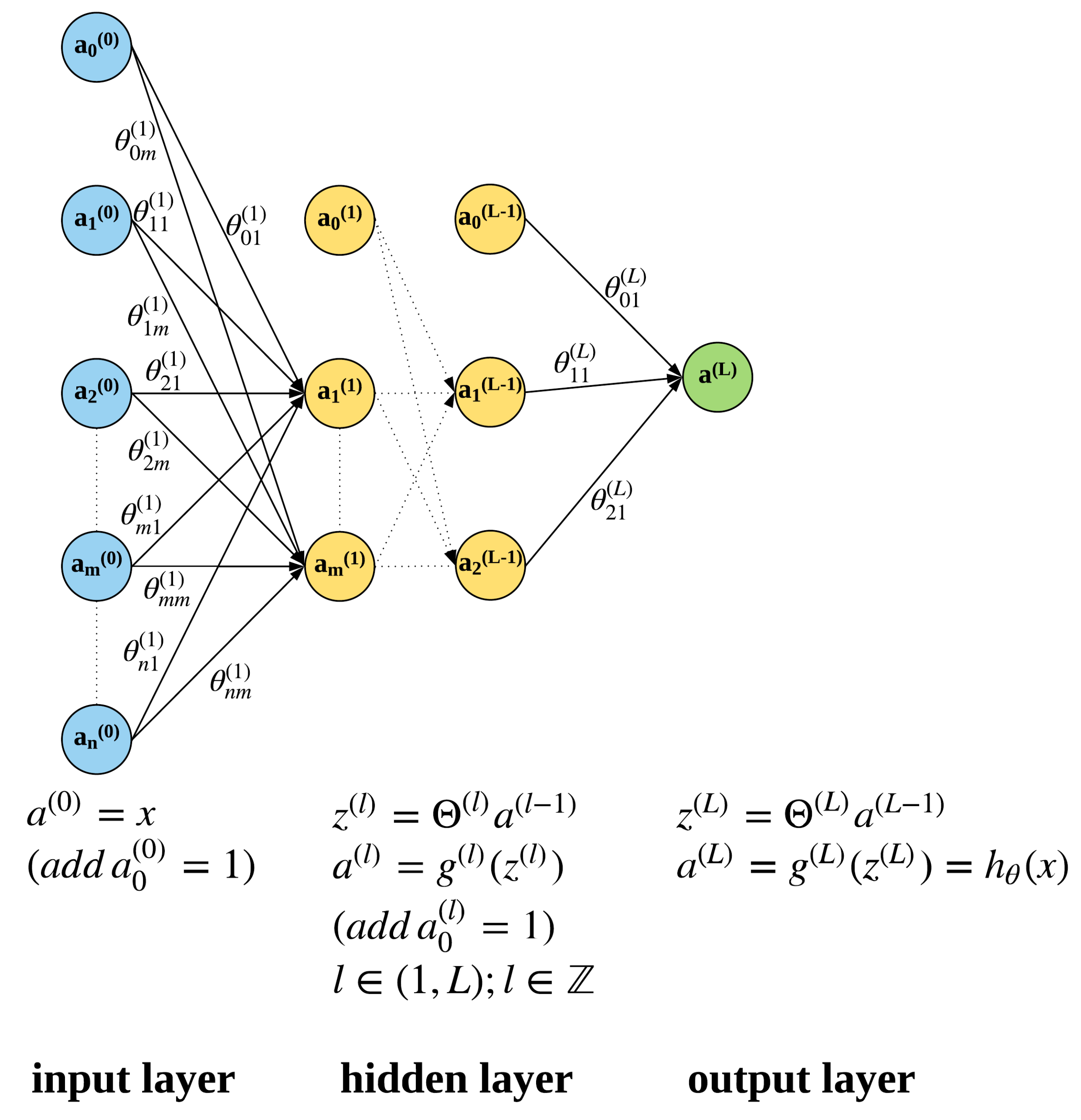
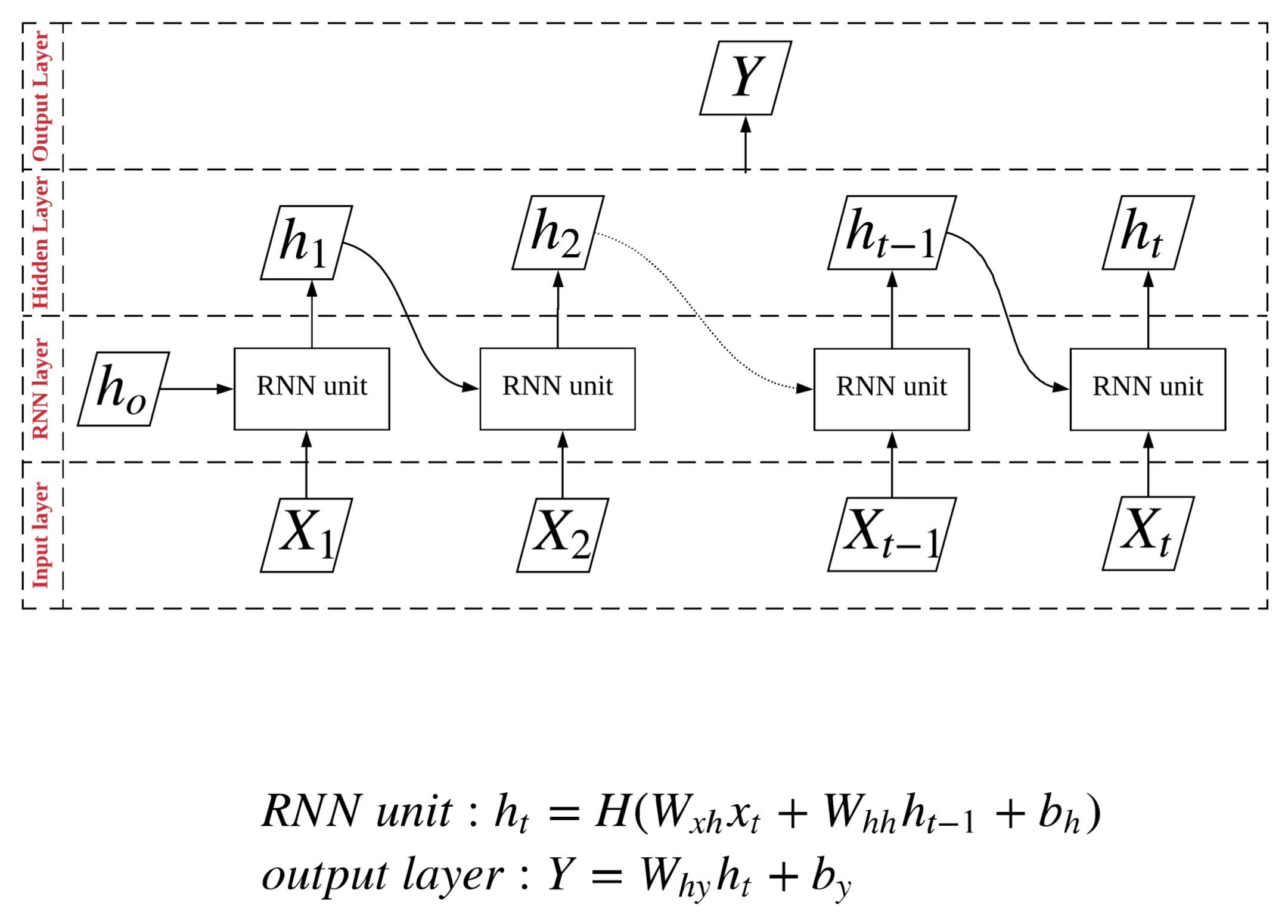

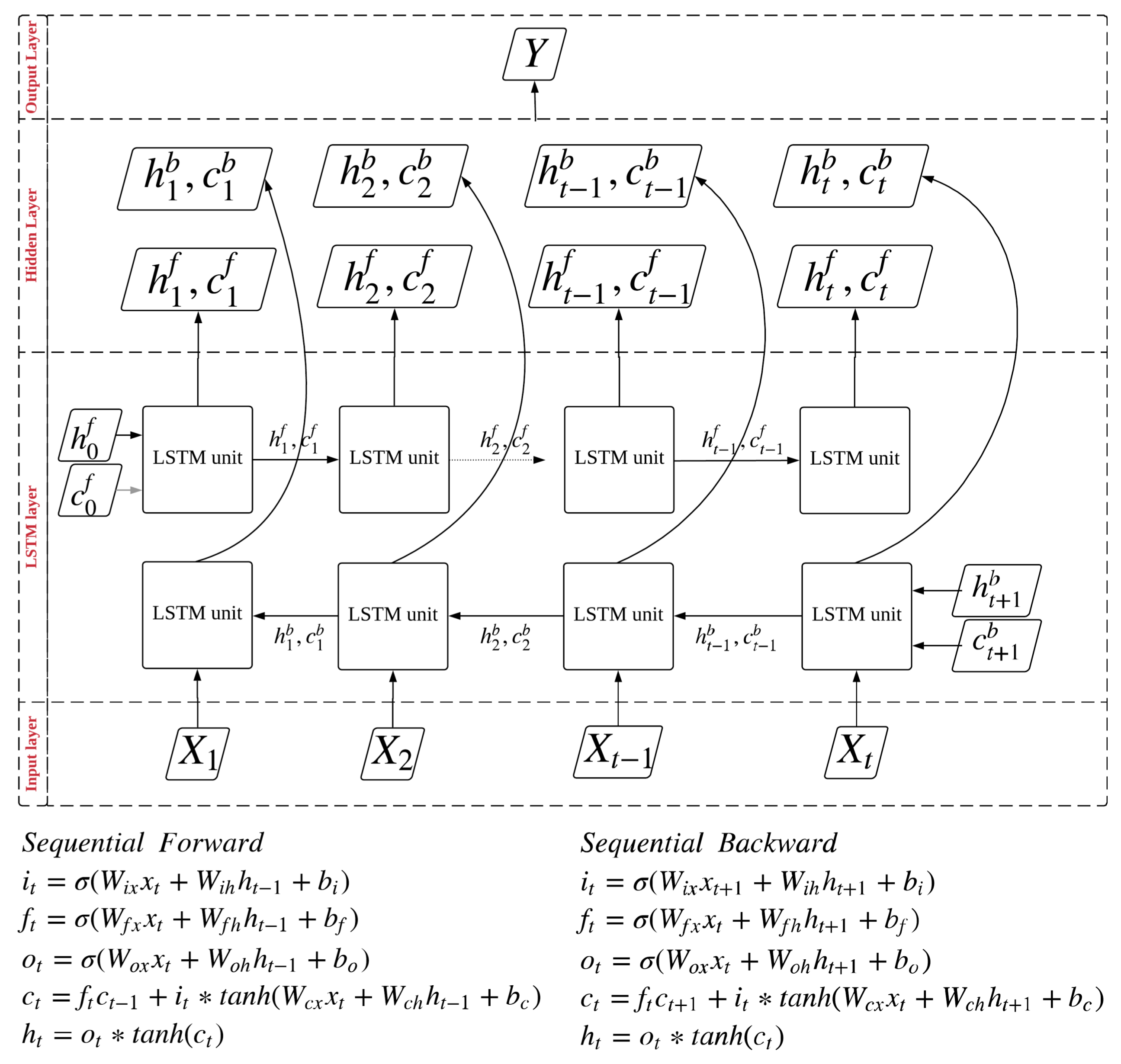
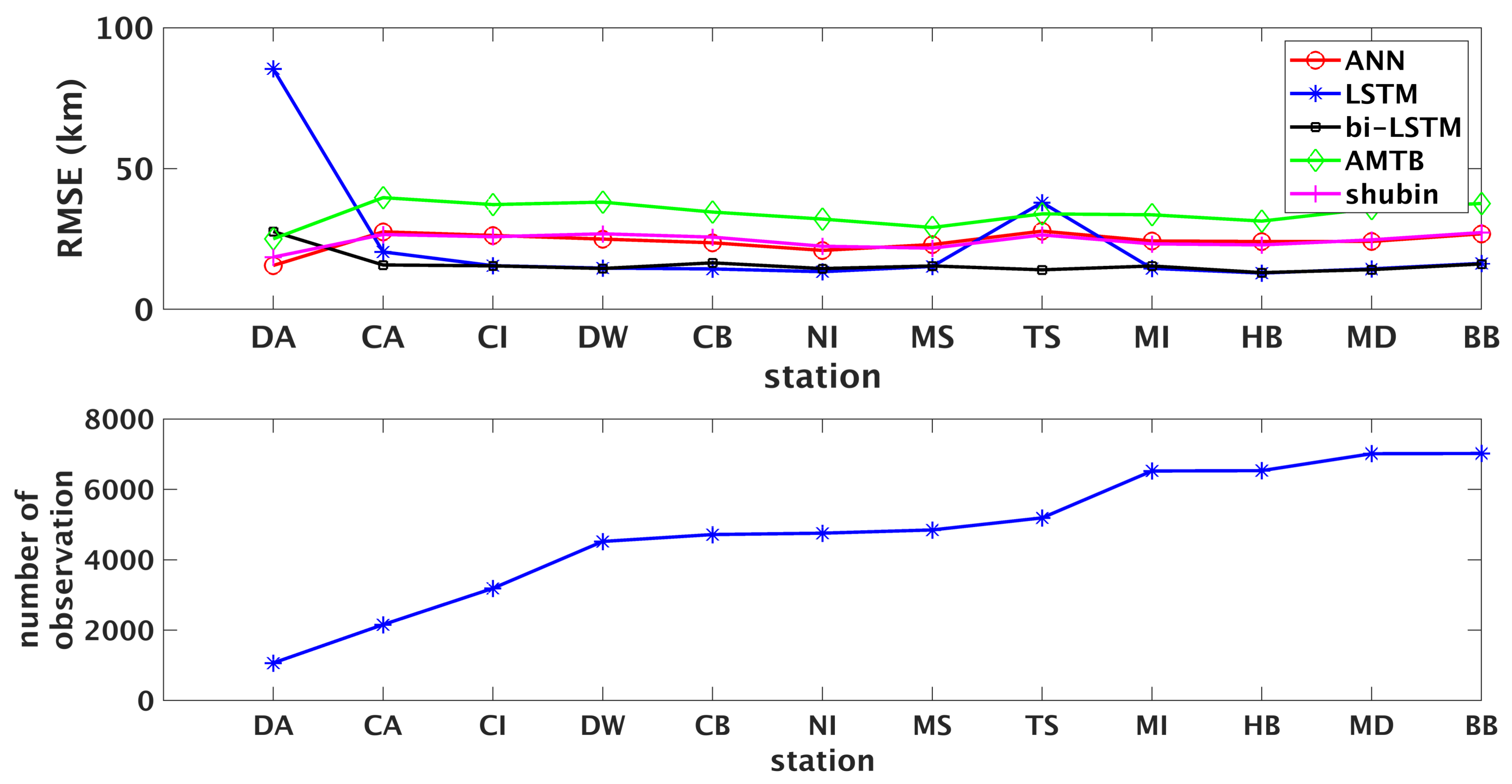
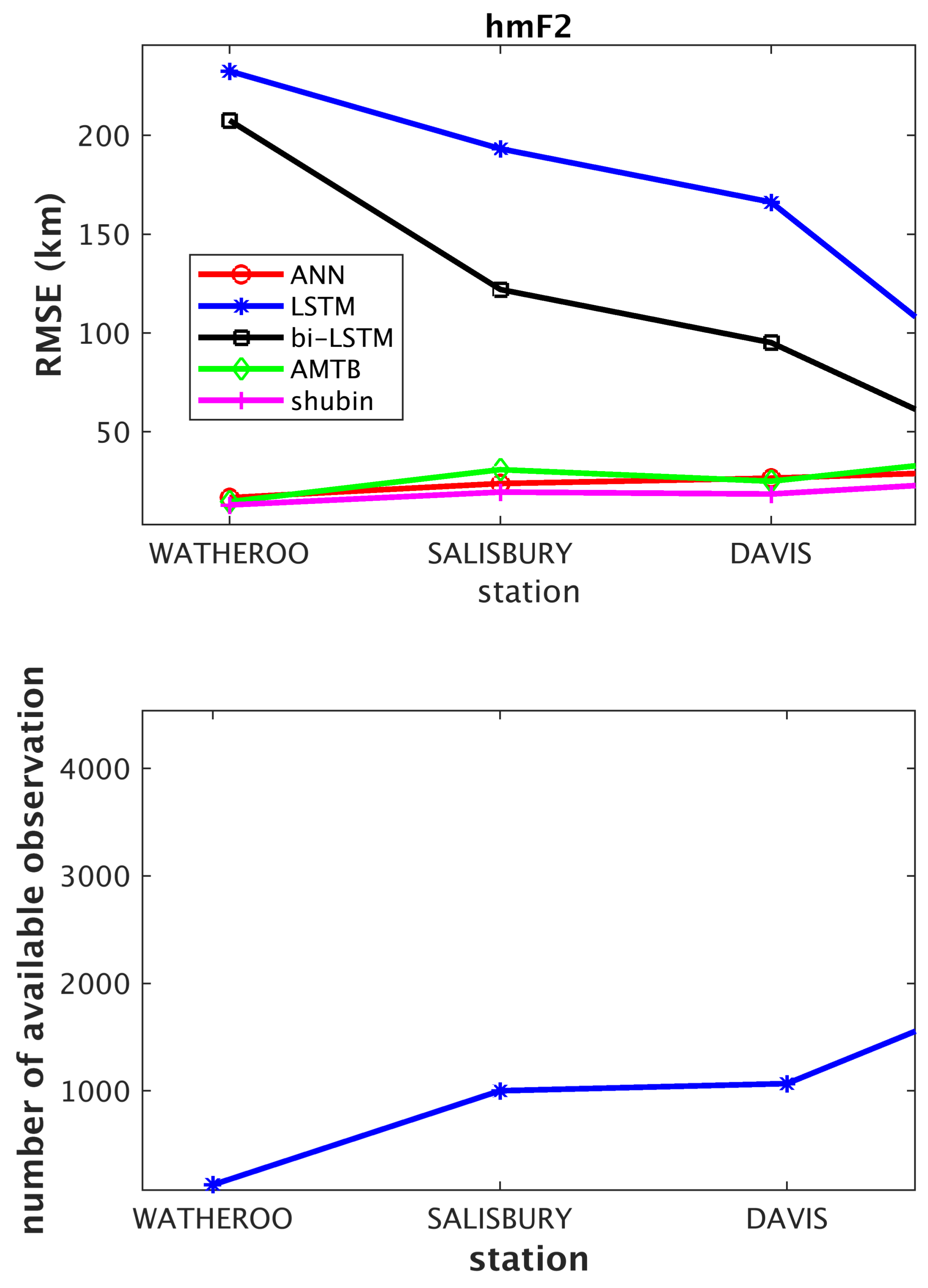
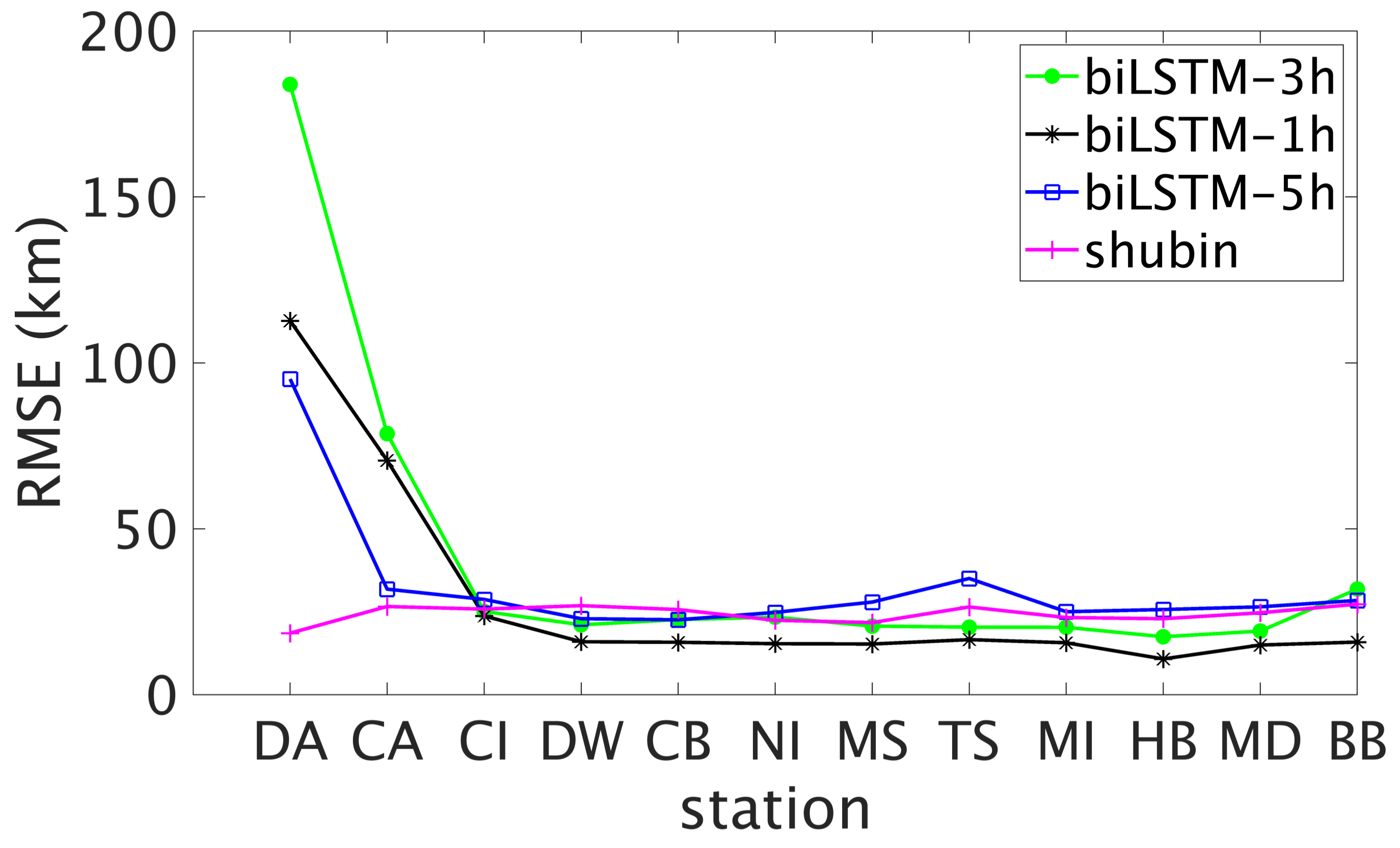
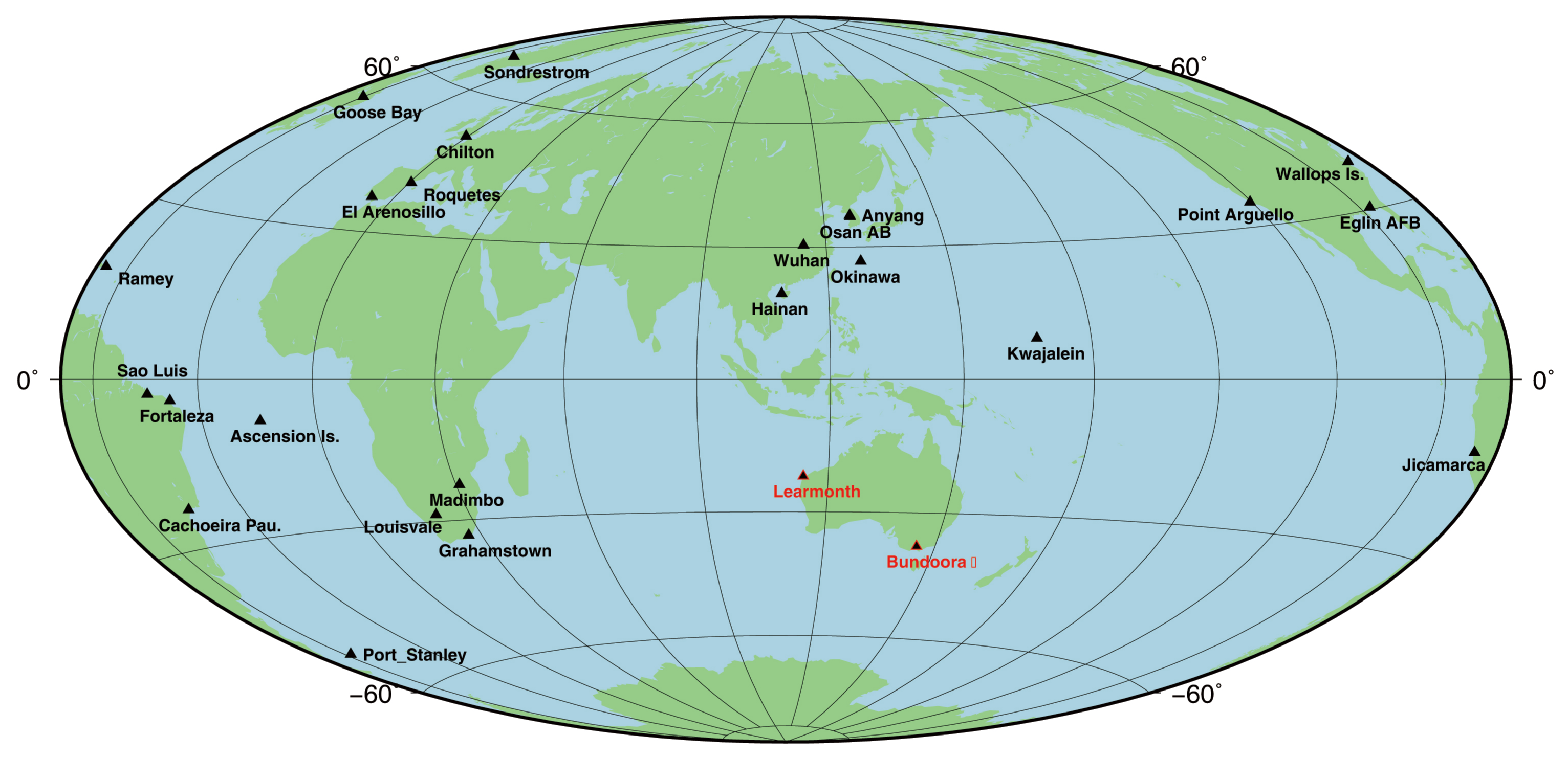
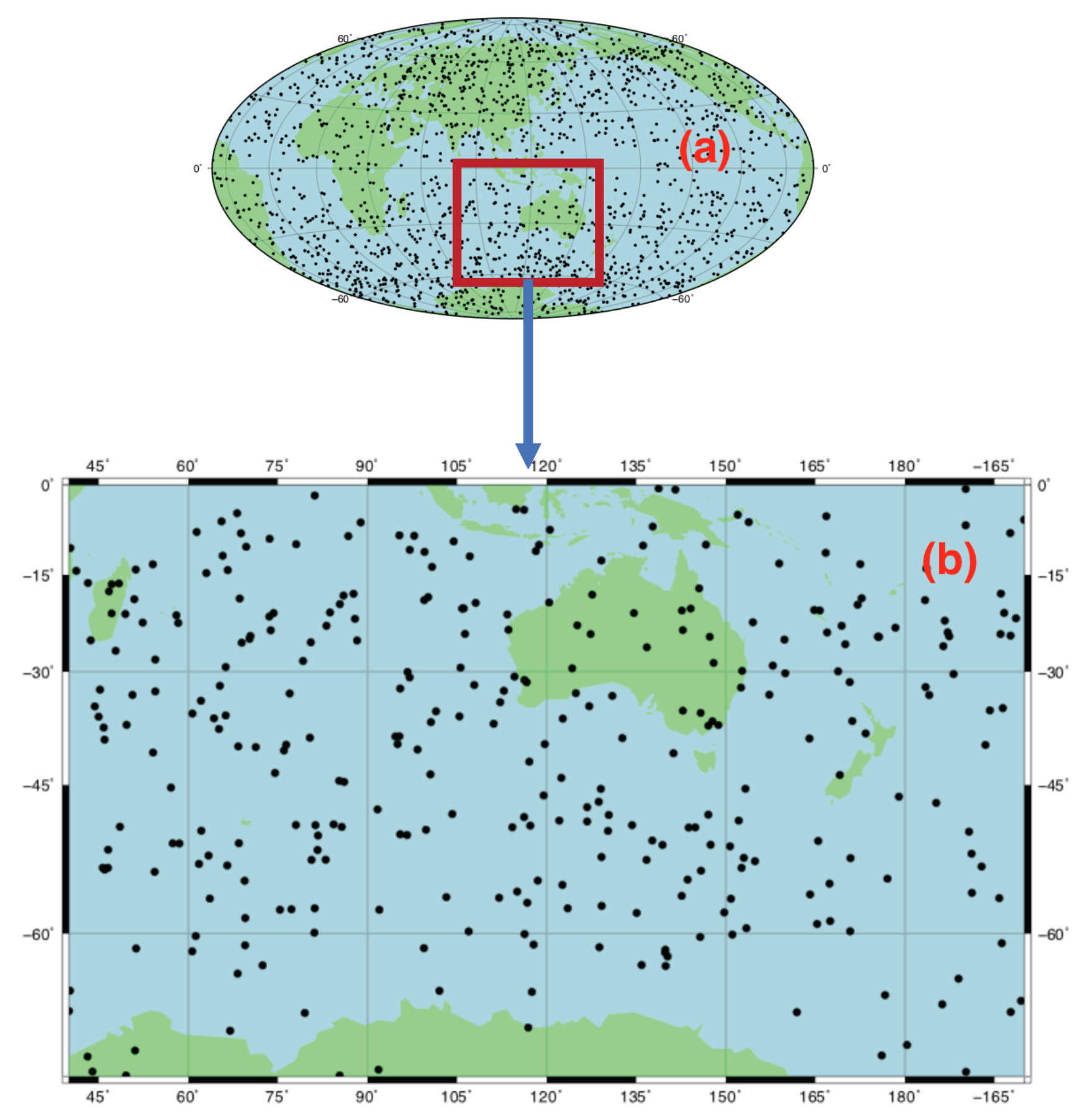


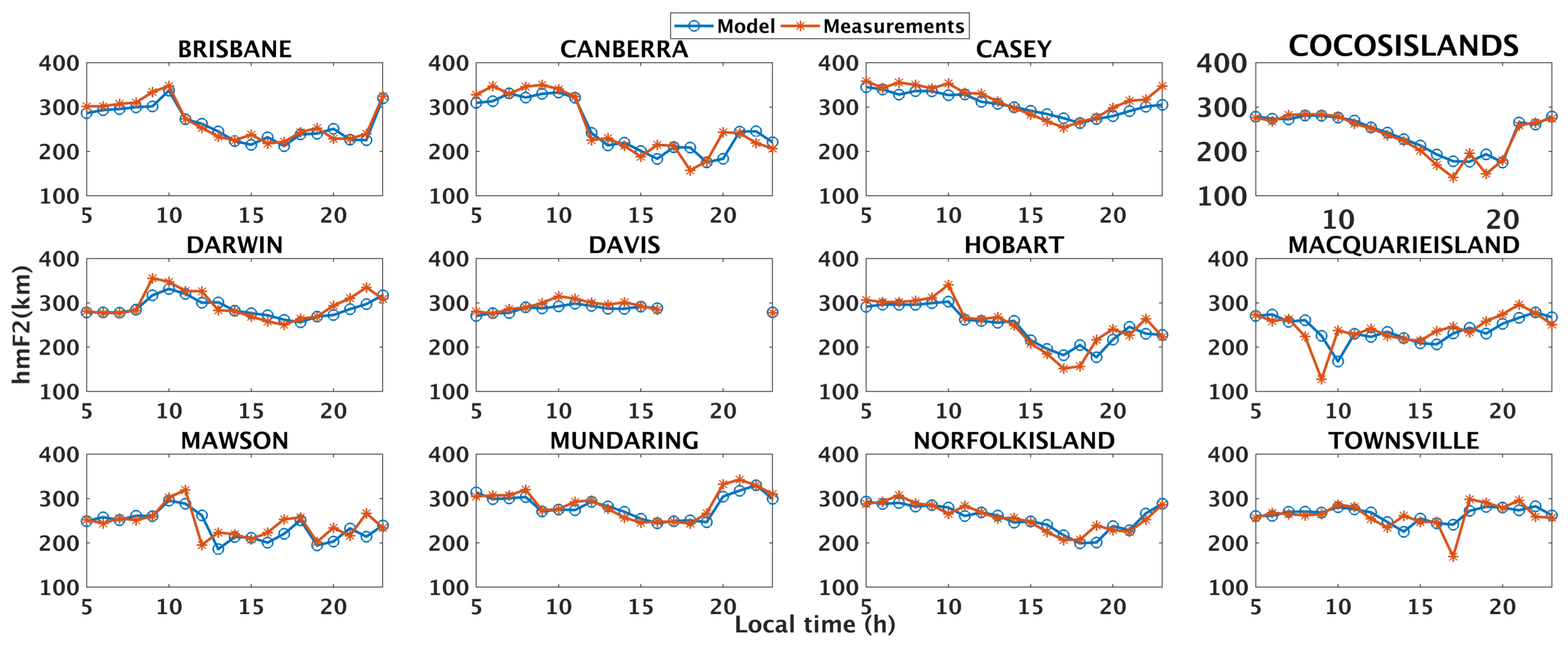
| Station Name (Acronym) | Latitude | Longitude | Open | Closed |
|---|---|---|---|---|
| Cocos Islands (CI) | −12.20 | 96.80 | Nov 1961 | Sep 1974 |
| Aug 2008 | ||||
| Darwin (DW) | −12.45 | 130.95 | Dec 1982 | |
| Townsville (TS) | −19.63 | 146.85 | Jun 1946 | |
| Brisbane (BB) | −27.53 | 152.92 | Jun 1943 | Dec 1986 |
| Jun 1997 | ||||
| Norfolk Island (NI) | −29.03 | 167.97 | Feb 1964 | |
| Mundaring (MD) | −31.98 | 116.22 | Apr 1959 | Dec 2007 |
| Canberra (CB) | −35.32 | 149.00 | Mar 1937 | |
| Hobart (HB) | −42.92 | 147.32 | Dec 1945 | |
| Macquarie Islands (MI) | −54.50 | 158.95 | Jun 1950 | Nov 1958 |
| Nov 1983 | Jun 2015 | |||
| Casey (CA) | −66.30 | 110.50 | Jul 1957 | Jan 1975 |
| Apr 1989 | Mar 1992 | |||
| Nov 2000 | ||||
| Mawson (MS) | −67.60 | 62.88 | Feb 1958 | |
| Davis (DA) | −68.58 | 77.96 | Feb 1985 |
| RMS (km) | |
|---|---|
| ANN | 22.1 |
| LSTM | 15.64 |
| bi-LSTM | 15.42 |
© 2018 by the authors. Licensee MDPI, Basel, Switzerland. This article is an open access article distributed under the terms and conditions of the Creative Commons Attribution (CC BY) license (http://creativecommons.org/licenses/by/4.0/).
Share and Cite
Hu, A.; Zhang, K. Using Bidirectional Long Short-Term Memory Method for the Height of F2 Peak Forecasting from Ionosonde Measurements in the Australian Region. Remote Sens. 2018, 10, 1658. https://doi.org/10.3390/rs10101658
Hu A, Zhang K. Using Bidirectional Long Short-Term Memory Method for the Height of F2 Peak Forecasting from Ionosonde Measurements in the Australian Region. Remote Sensing. 2018; 10(10):1658. https://doi.org/10.3390/rs10101658
Chicago/Turabian StyleHu, Andong, and Kefei Zhang. 2018. "Using Bidirectional Long Short-Term Memory Method for the Height of F2 Peak Forecasting from Ionosonde Measurements in the Australian Region" Remote Sensing 10, no. 10: 1658. https://doi.org/10.3390/rs10101658
APA StyleHu, A., & Zhang, K. (2018). Using Bidirectional Long Short-Term Memory Method for the Height of F2 Peak Forecasting from Ionosonde Measurements in the Australian Region. Remote Sensing, 10(10), 1658. https://doi.org/10.3390/rs10101658







